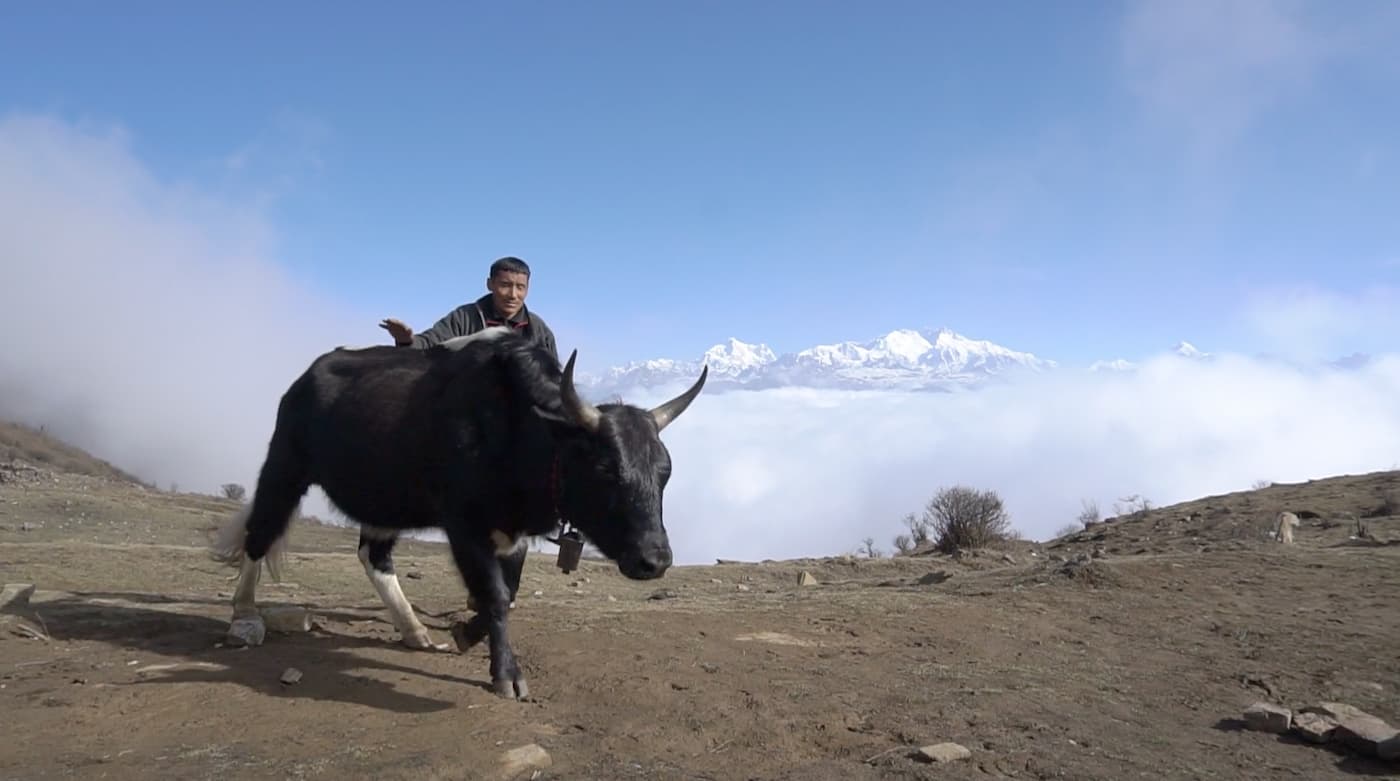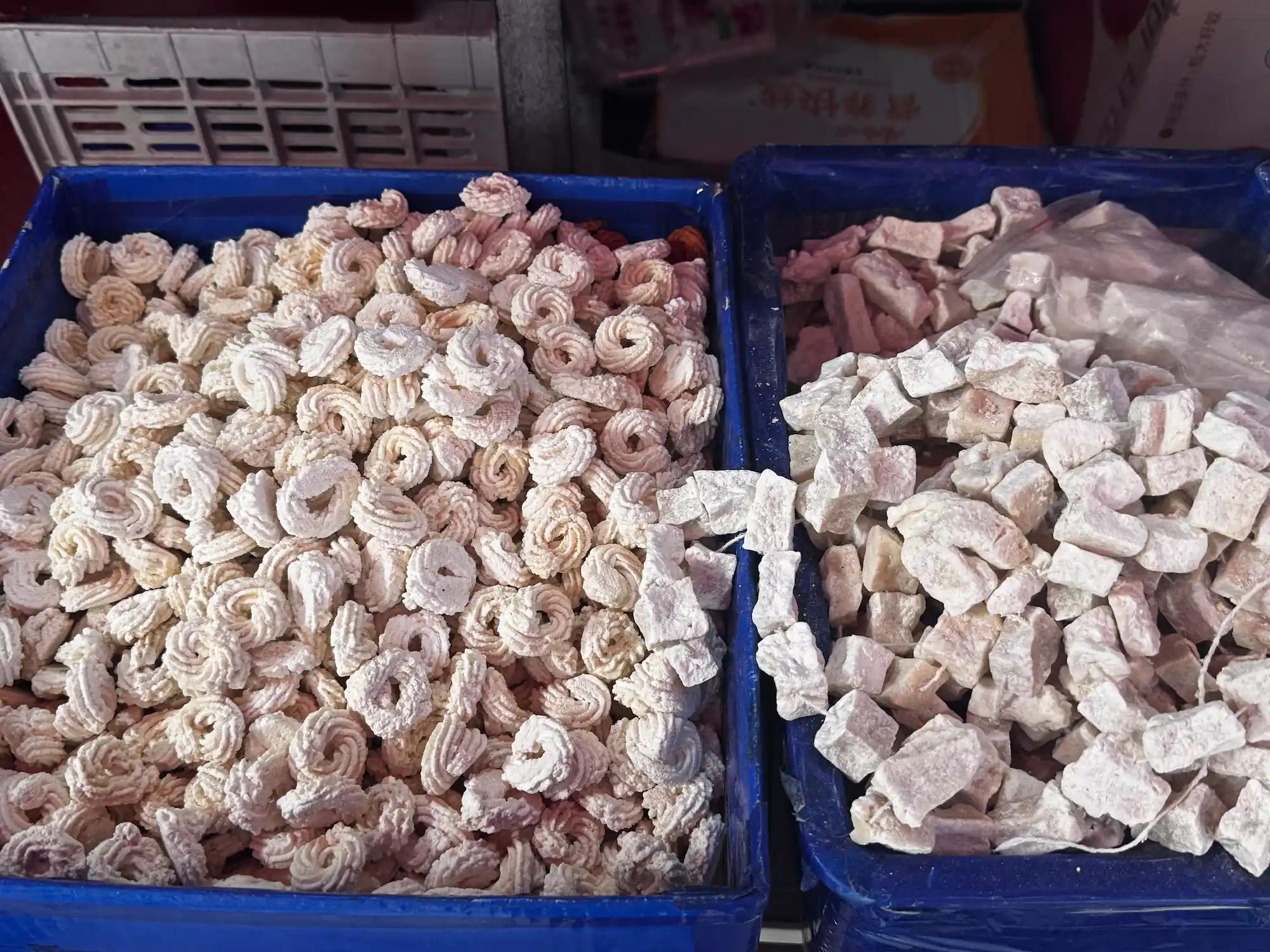On the plateaus of Tibet, where air grows thin and mountains pierce the heavens at heights between three and five thousand meters, a creature thrives. This creature is so perfectly adapted to this harsh realm that, without it, human life would be impossible. The Tibetan yak, called "g.yag" for the male and "dri" for the female, stands as a guardian and gift to the people who have called this land home for millennia.This is not merely an animal. This is the very heartbeat of Tibetan civilization, a sacred partnership between species that has endured for over four thousand years. To understand the yak is to understand Tibet itself.

The story of the yak begins deep in prehistory. It diverged from domesticated cattle about 1 million years ago. Fossilized remains of yak-like bovines have been found throughout the Himalayas, stretching north to Mongolia and reaching parts of eastern Russia. Scientists believe these ancient ancestors may have given rise to the North American Bison. This suggests a great migration between continents.
Through countless generations, the yak evolved into a master of high-altitude survival, developing extraordinary adaptations that allow it to thrive where other animals would perish. Today, wild yaks roam the highest grasslands on Earth, while their domesticated cousins work alongside Tibetan nomads in a relationship built on mutual dependence and profound respect. To appreciate these remarkable abilities, it's essential to examine how yaks have adapted to life in the thin air of the Tibetan plateau.
The Tibetan yak represents one of nature's most spectacular examples of adaptation to extreme environments. While most mammals would struggle to survive above 3,000 meters, the yak lives at elevations up to 6,400 meters, where oxygen levels drop to nearly half those at sea level.
How do they accomplish this feat?
Key adaptations allow yaks to thrive at high altitudes: Yak blood carries far more oxygen than normal cattle because they have three times as many red blood cells. Their fourteen or fifteen rib pairs, more than cattle’s thirteen, make their lungs expand to maximize oxygen intake. Proportionally larger hearts and lungs efficiently circulate oxygen-rich blood throughout bodies weighing between two hundred thirty and one thousand kilograms.
Against winter temperatures that drop to minus thirty degrees Celsius, the yak wears a magnificent coat of long, thick hair. This hair cascades down its flanks like a blanket. Most yaks display deep black coloring, absorbing precious solar radiation to warm their massive frames. Wild yaks are typically black or brown. Domesticated animals may show patches of lighter brown, white, cream, and grey.
Their sturdy legs end in the characteristic round, cloven hooves of bovines, perfectly designed for navigating the rocky, uneven terrain of the Tibetan plateau. Watch a yak traverse a steep mountainside, and you witness grace born from ten thousand generations of natural selection. These adaptations are not only crucial for survival but are also central to the nomadic ways of Tibetan life that revolve around the yak.
The Tibetan pastoral zone, stretching nearly 2,500 kilometers from west to east and 1,200 kilometers from north to south, is among Earth's largest pastoral areas. In this vast region, nomadism has thrived for four millennia, illustrating a model of sustainable living. This zone demonstrates both cultural endurance and long-term environmental balance.
Nomads and their yaks move in a careful dance, rythmed by the seasons and the growth of grass. When pastures grow thin and risk degradation, families dismantle their black tents. They load their belongings onto yak backs and migrate to greener zones.
In winter, herders guide their animals down from frozen plateaus into somewhat warmer valleys. During particularly harsh winters, nomads have been known to sacrifice their own barley grain to save their beloved animals, understanding that without the yak, survival becomes impossible. The compassion these people show toward their animals carries a tenderness that moves observers deeply.
From horn to tail, from hide to hoof, Tibetans utilize every single part of the yak in ways that demonstrate both ingenuity and respect. This complete use reflects a worldview where waste is unthinkable.
Horns and skulls become traditional trumpet-like instruments, combs, smoking pipes, and decorative elements that adorn homes and sacred spaces across the plateau.
Yak hair varies in texture depending on its location on the body. The coarse hair from the spine is woven into the outer fabric of the iconic black tents that shelter nomadic families. Moving down the animal's flanks, the hair softens. It becomes suitable for clothing, bags, blankets, carpets, and household items. The finest inner wool is spun into chara, a type of felt used in religious practices.
The tough hide serves as a cushion and a floor mat in Tibetan homes. When transformed into leather, it becomes belts, boots, shoes, and food storage bags. Even the soles of traditional Tibetan boots are made of yak hide for durable protection against rocky terrain.
Yak meat, while similar to beef, carries a distinctive flavor and is slightly tougher in texture. It provides the main protein source for plateau dwellers. People eat it in Tibetan noodles, momos, or dried into jerky that can last for months. The meat is rich in protein, making it nourishing during harsh winter months.
The long, flowing tails, more like a horse's than those of western cattle, are fashioned into brooms and dusters. Recently, they have become decorative elements in local businesses. Some tails reach eighty to one hundred centimeters in length.
Yak dung is one of the most crucial products in a land nearly without trees. Collected daily and dried into cakes, it is stacked against home walls. This fuel burns with little odor, providing warmth for cooking and heating year-round. Without it, surviving the brutal Tibetan winter would be nearly impossible.
Milk from the dri (female yak) is exceptionally rich. It yields butter, cheese, and the famous Tibetan yogurt. Yak butter's most beloved use is in butter tea, warming bodies and souls across the plateau. Butter also fuels the lamps that flicker in monasteries, their flames carrying prayers heavenward.

Even the bones are ground into powder and serve as excellent fertilizer for farmland. This ensures that nothing goes to waste.
Yaks begin working at age two and often serve for over twenty years. They are strong animals, able to carry loads between one hundred and two hundred kilograms over about fifteen kilometers daily. Their strength and endurance make them irreplaceable in regions where vehicles struggle or cannot venture at all.Their intelligence shows in their ability to recognize routes and navigate dangerous terrain. If they encounter marshland, a yak instinctively detours to avoid getting trapped.
Yaks excel at traversing steep, treacherous paths, crossing swamps and rivers, and climbing snow-covered mountains, places where human lungs gasp for air.Travelers trekking through Tibet often hire yaks to carry luggage. These animals follow caravan routes that have connected communities for centuries. On farms, yaks serve as plough animals that prepare fields for barley. Adventurers and mountaineers depend on yak caravans for expeditions to the highest reaches of the Himalayas.On the north face of Mount Everest, yaks have a vital role in conservation. They are the only animals that can transport expedition equipment to advanced base camp at 6,500 meters. Yaks have been instrumental in removing tons of waste from decades of commercial expeditions, making projects like "Clean Everest" possible.
In Tibetan communities, yaks are revered as treasures and called "the boat of the plateau." This is no mere metaphor. The relationship between Tibetans and yaks transcends utility and enters the realm of the sacred.
Nomadic families name their yaks as they name their children, recognizing each animal's individual personality and treating them with genuine affection. The animals are highly emotional creatures whose blood circulates so quickly that their hearts remain fragile, unable to withstand strong emotional shocks. The gentleness and patience that nomads show their animals reflect a deep understanding built over generations.
Tibetan traditional life revolves entirely around the yak. Families are warmed by yak-dung fires and illuminated by yak-butter lamps. They consume yak meat, blood, butter, cheese, and yogurt. Their clothing, blankets, shelters, and historically even boats are woven from yak hair.
The staple dish tsampa combines salted tea pounded together with yak butter, to which toasted barley flour is added and mixed by hand before eating.This dependence upon a single species is characteristic of pastoral peoples worldwide, but nowhere is the relationship more complete, more essential, or more revered than on the Tibetan plateau.
Traditional festivals feature yak racing, where these powerful animals demonstrate their speed and spirit while crowds celebrate. More recently, sports like yak skiing and yak polo have emerged, though purists might view these as tourist attractions rather than authentic cultural expressions.
The Tibetan plateau, often called the Third Pole, serves as the watershed for some of Asia's mightiest rivers. Here, the Yellow River, the Yangtze, the Mekong, the Salween, the Brahmaputra, the Ganges, the Indus, and the Sutlej all take their first tentative flows. The preservation and management of these grasslands and waterways carry global implications, as billions of people downstream depend on water from these sources.The yak plays an indispensable role in maintaining this ecosystem. Through their grazing patterns, yaks help preserve the grass cover that protects the permafrost beneath from excessive evaporation.
This is a remarkably resilient ecosystem one of Earth's largest pastoral zones, where transhumance routes traverse some of the world's greatest grasslands.
The Yak's Role:
Yaks graze in a way that trims the grass but does not typically uproot it. This maintains a consistent, light-colored grass cover. This cover acts as a layer of insulation, reflecting solar radiation and shielding the permafrost soil from direct sunlight and wind, reducing evaporation and slowing the thawing process. Overgrazing (by other animals or in areas with too many yaks) or undergrazing (which leads to long, matted grass that can trap more heat) can both be detrimental. Traditional, managed yak grazing strikes a balance that preserves this protective layer.
The subtle balance between humans, animals, and nature creates a unique pastoral culture that has endured for four thousand years.
Tourists journeying to Tibet encounter yaks in numerous locations throughout their travels. Whether touring from Lhasa to the stunning Lake Namtso via Nagqu, trekking from Everest Base Camp to Advanced Base Camp, or exploring the many other trekking destinations across Tibet, the presence of yaks shapes the landscape and the experience.
To observe these magnificent creatures in their natural environment, to watch nomadic families moving with their herds across vast grasslands beneath impossibly blue skies, to taste yak butter tea while seated in a black tent, to feel the bite of wind at five thousand meters while a yak calmly grazes nearby, these experiences offer profound insights into this way of life.
It might be most accurate to say that in Tibet humans belong to yaks rather than the other way around. Without this extraordinary animal, human life on the high Tibetan plateau would have been impossible.
The yak devours every blade of grass it can find, and the health of the pastures remains essential to the health of the herds. On the high plateau, the grazing season is short, running from May to October, requiring yaks to build fat reserves that will sustain them through winter's privations.Perhaps in the patient wisdom of the yak, in the careful movement of nomadic families across sacred grasslands, in the smoking yak-dung fires that warm Tibetan homes, and in the butter lamps whose flames have flickered in monasteries for centuries, we find not a relic of the past but a vision for the future, a reminder that the most sustainable relationships are those built on respect, gratitude, and the recognition that we are all, humans and animals alike, threads in the same living tapestry.